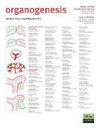Recellularization via the bile duct supports functional allogenic and xenogenic cell growth on a decellularized rat liver scaffold
IF 2.8
4区 生物学
Q4 BIOCHEMISTRY & MOLECULAR BIOLOGY
引用次数: 30
Abstract
ABSTRACT Recent years have seen a proliferation of methods leading to successful organ decellularization. In this experiment we examine the feasibility of a decellularized liver construct to support growth of functional multilineage cells. Bio-chamber systems were used to perfuse adult rat livers with 0.1% SDS for 24 hours yielding decellularized liver scaffolds. Initially, we recellularized liver scaffolds using a human tumor cell line (HepG2, introduced via the bile duct). Subsequent studies were performed using either human tumor cells co-cultured with human umbilical vein endothelial cells (HUVECs, introduced via the portal vein) or rat neonatal cell slurry (introduced via the bile duct). Bio-chambers were used to circulate oxygenated growth medium via the portal vein at 37C for 5-7 days. Human HepG2 cells grew readily on the scaffold (n = 20). HepG2 cells co-cultured with HUVECs demonstrated viable human endothelial lining with concurrent hepatocyte growth (n = 10). In the series of neonatal cell slurry infusion (n = 10), distinct foci of neonatal hepatocytes were observed to repopulate the parenchyma of the scaffold. The presence of cholangiocytes was verified by CK-7 positivity. Quantitative albumin measurement from the grafts showed increasing albumin levels after seven days of perfusion. Graft albumin production was higher than that observed in traditional cell culture. This data shows that rat liver scaffolds support human cell ingrowth. The scaffold likewise supported the engraftment and survival of neonatal rat liver cell slurry. Recellularization of liver scaffolds thus presents a promising model for functional liver engineering.通过胆管再细胞化支持脱细胞大鼠肝支架上的功能性同种异体和异种细胞生长
近年来出现了大量成功的器官脱细胞方法。在本实验中,我们研究了去细胞化肝脏结构支持功能性多系细胞生长的可行性。生物室系统用0.1% SDS灌注成年大鼠肝脏24小时,得到脱细胞肝支架。最初,我们使用人类肿瘤细胞系(HepG2,通过胆管导入)再细胞化肝脏支架。随后的研究使用人肿瘤细胞与人脐静脉内皮细胞(HUVECs,通过门静脉导入)或大鼠新生细胞浆(通过胆管导入)共同培养进行。生物室在37℃条件下通过门静脉循环含氧生长培养基5-7天。人HepG2细胞在支架上生长良好(n = 20)。与HUVECs共培养的HepG2细胞显示出可存活的人内皮细胞衬里,并伴有肝细胞生长(n = 10)。在一系列新生儿细胞浆液输注(n = 10)中,观察到明显的新生儿肝细胞灶重新填充支架的实质。CK-7阳性证实胆管细胞的存在。灌注7天后,移植物的白蛋白定量测量显示白蛋白水平升高。移植物白蛋白产量高于传统细胞培养。这些数据表明,大鼠肝脏支架支持人类细胞向内生长。支架同样支持新生大鼠肝细胞浆液的移植和存活。因此,肝支架的再细胞化为功能性肝工程提供了一种很有前景的模型。
本文章由计算机程序翻译,如有差异,请以英文原文为准。
求助全文
约1分钟内获得全文
求助全文
来源期刊

Organogenesis
BIOCHEMISTRY & MOLECULAR BIOLOGY-DEVELOPMENTAL BIOLOGY
CiteScore
4.10
自引率
4.30%
发文量
6
审稿时长
>12 weeks
期刊介绍:
Organogenesis is a peer-reviewed journal, available in print and online, that publishes significant advances on all aspects of organ development. The journal covers organogenesis in all multi-cellular organisms and also includes research into tissue engineering, artificial organs and organ substitutes.
The overriding criteria for publication in Organogenesis are originality, scientific merit and general interest. The audience of the journal consists primarily of researchers and advanced students of anatomy, developmental biology and tissue engineering.
The emphasis of the journal is on experimental papers (full-length and brief communications), but it will also publish reviews, hypotheses and commentaries. The Editors encourage the submission of addenda, which are essentially auto-commentaries on significant research recently published elsewhere with additional insights, new interpretations or speculations on a relevant topic. If you have interesting data or an original hypothesis about organ development or artificial organs, please send a pre-submission inquiry to the Editor-in-Chief. You will normally receive a reply within days. All manuscripts will be subjected to peer review, and accepted manuscripts will be posted to the electronic site of the journal immediately and will appear in print at the earliest opportunity thereafter.
 求助内容:
求助内容: 应助结果提醒方式:
应助结果提醒方式:


